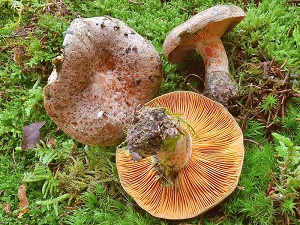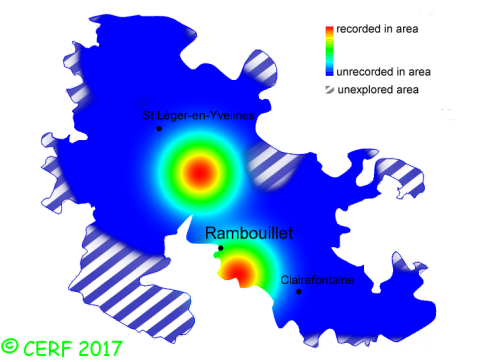| Lactarius quieticolor Romagn. |
|
|
|
|
|
|
The cap is orange-brown to red-brown with violet, green or grey tints, sometimes green or blue in young specimens, convex-flattened then depressed; its margin is smooth, very inrolled when young. The cap surface is more or less with concentric bands of patches, smooth, silky when dry, viscid when damp. The stem is same colour as cap or paler, more or less cylindrical, without ring. The flesh is bright orange, turning slowly to vinaceous-brown when exposed to air; its taste is mild or slightly bitter or astringent; the odour is faint; its texture is grainy (breaking like a chalk stick), exuding when cut a scarce orange milk, turning vinaceous brown, then greenish when drying. The gills are salmon pink, saffron to orange brown, adnate to decurrent, crowded . The spore print is cream. This species is mycorrhizal. It grows in coniferous woods, on a rather acid soil, under pine only. The fruiting period takes place from July to December.
Distinctive features : orange-brown to grey-brown cap, sometimes washed with green or purple, with spots arranged in concentric bands; stem with a few or no blotches and a short whitish belt just below the gills; orange milk becoming vinaceous brown, drying greenish; with pines only Lactarius quieticolor is rare and confined in the forest of Rambouillet, and is quite rare, more generally speaking . | ||
|
page updated on 14/01/18

